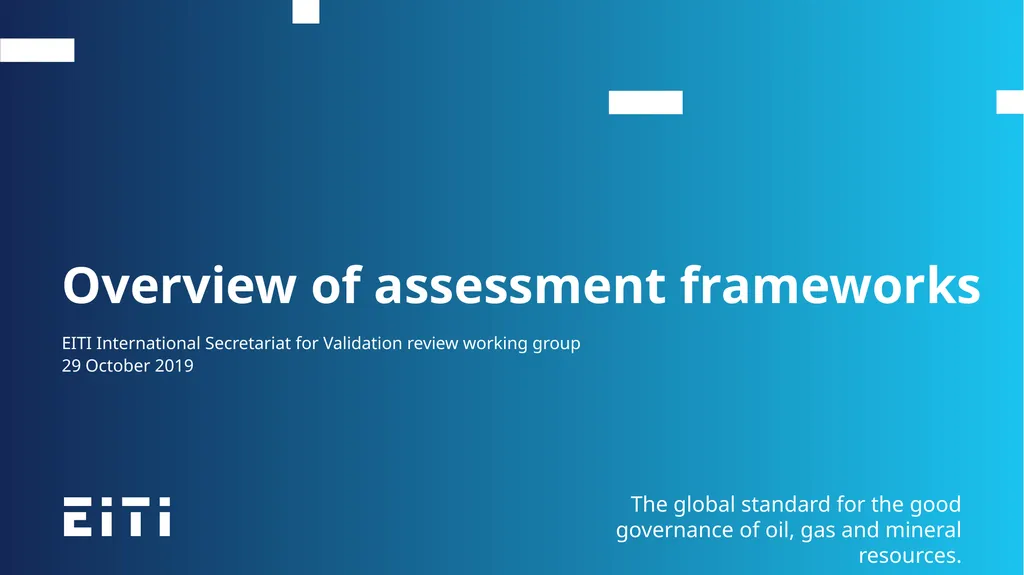EITI International Secretariat for Validation
Author : conchita-marotz | Published Date : 2025-06-23
Description: EITI International Secretariat for Validation review working group 29 October 2019 Overview of assessment frameworks Assessment frameworks included African Peer Review Mechanism Clean Development Mechanism Financial Action Task Force Global
Presentation Embed Code
Download Presentation
Download
Presentation The PPT/PDF document
"EITI International Secretariat for Validation" is the property of its rightful owner.
Permission is granted to download and print the materials on this website for personal, non-commercial use only,
and to display it on your personal computer provided you do not modify the materials and that you retain all
copyright notices contained in the materials. By downloading content from our website, you accept the terms of
this agreement.
Transcript:EITI International Secretariat for Validation:
EITI International Secretariat for Validation review working group 29 October 2019 Overview of assessment frameworks Assessment frameworks included African Peer Review Mechanism Clean Development Mechanism Financial Action Task Force Global Reporting Initiative ISO Standards OECD Global Forum Open Government Partnership Independent Reporting Mechanism Resource Governance Index Universal Periodic Review Summary of findings It is typical for review processes to be extensive and lengthy. The more detailed the underlying standard is, the more detailed the reviews become. Self-assessments are a common feature (APRM, Global Forum, CDM). Many review mechanisms rely on peer reviews, with a secretariat providing support and a board approving the final report. This requires that all members are able to contribute experts. Other models include e.g. contracting country-specific researchers (OGP and RGI) or outsourcing compliance checks to accredited actors (ISO, CDM). Reviews focus to a varying degree on technical indicators vs. outcomes and impact. The purpose of the reviews varies. In some cases the focus is on learning through the review process (APRM, UPR), in others on the outcome of the assessment (Global Forum, FATF, RGI). Typically full compliance is not expected for the highest rating. Most review mechanisms lack effective measures to ensure that recommendations are followed up and gaps addressed. Stakeholder pressure and blacklisting (OECD, FATF) appear to be the most common consequences of poor performance. African Peer Review Mechanism (APRM) 1/2 Member countries within the APRM (38) undertake self-monitoring in all aspects of their governance and socio-economic development. African Union (AU) stakeholders participate in the assessment of different branches of government, the private sector, civil society and the media. The APRM Review Process gives member states a space for national dialogue on governance and socio-economic indicators and an opportunity to build consensus on the way forward. Four thematic areas: Democracy and Political Governance, Economic Governance and Management, Corporate Governance, Broad-based Sustainable Socio-economic Development. Four types of country reviews: Base Review – carried out immediately after a country becomes a member of the APRM Periodic Review every four years Requested Review – requested by the member country itself outside the framework of mandated reviews A Review commissioned by the APR Forum when there are early signs of pending political and economic crisis. Links: https://www.aprm-au.org/ https://au.int/en/organs/aprm https://www.aprm-au.org/publications/objectives-standards-criteria-and-indicators/ http://www.aprmtoolkit.saiia.org.za/country-reports-and-experiences?start=40 African Peer Review Mechanism (APRM) 2/2 Five stages of peer review consultation: The APR Secretariat and the country under review consult on the process overview. The country creates a














